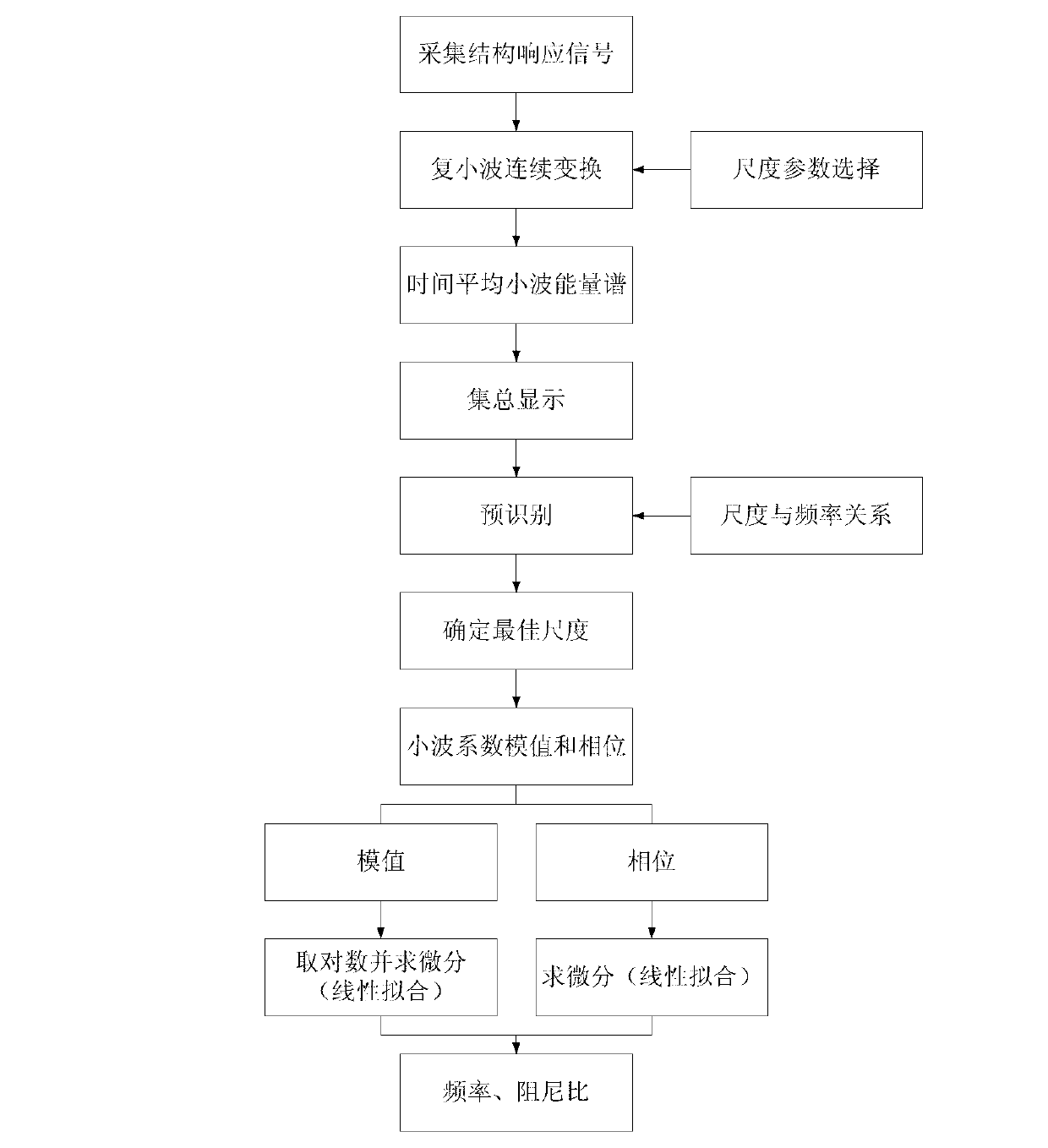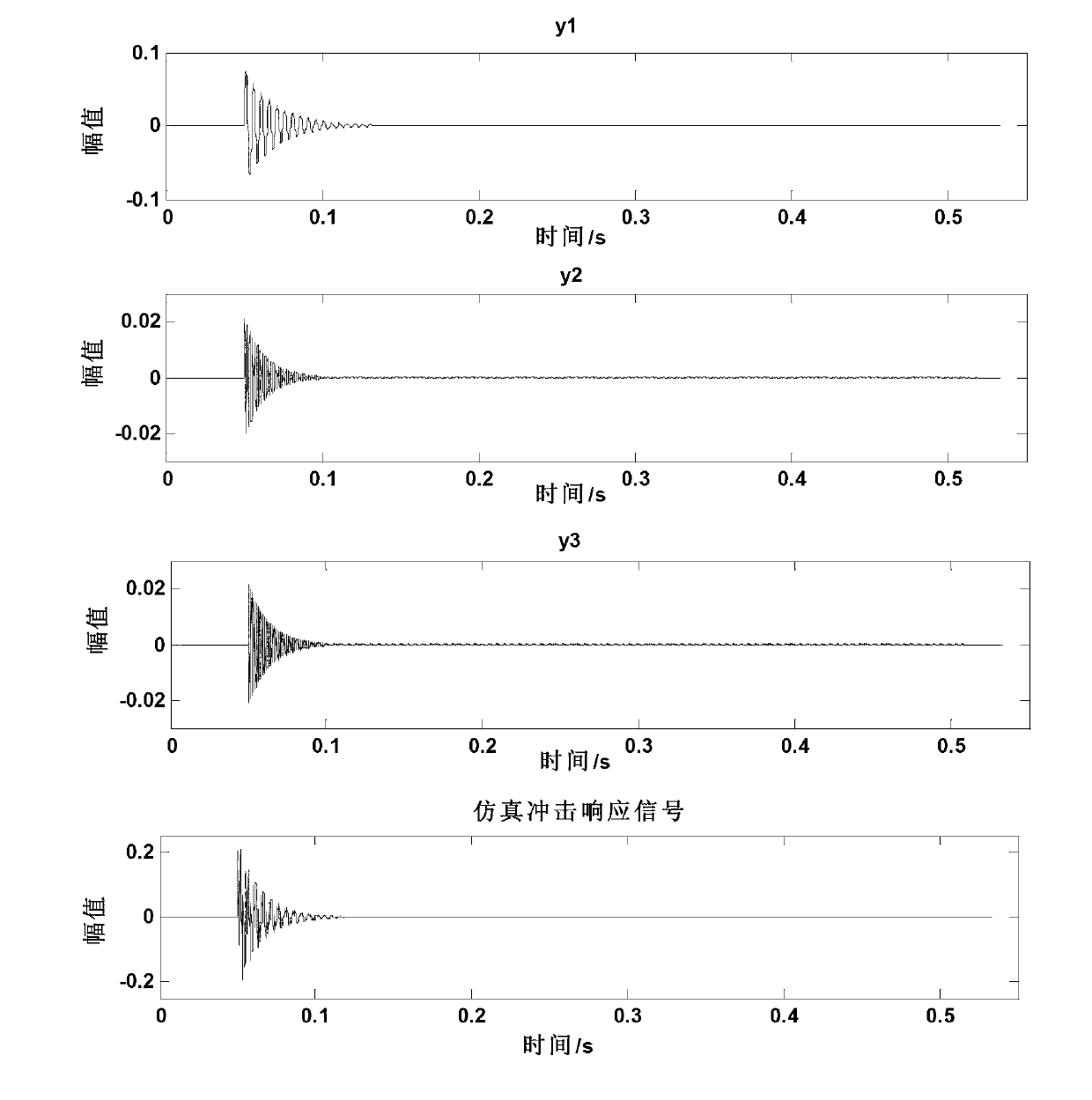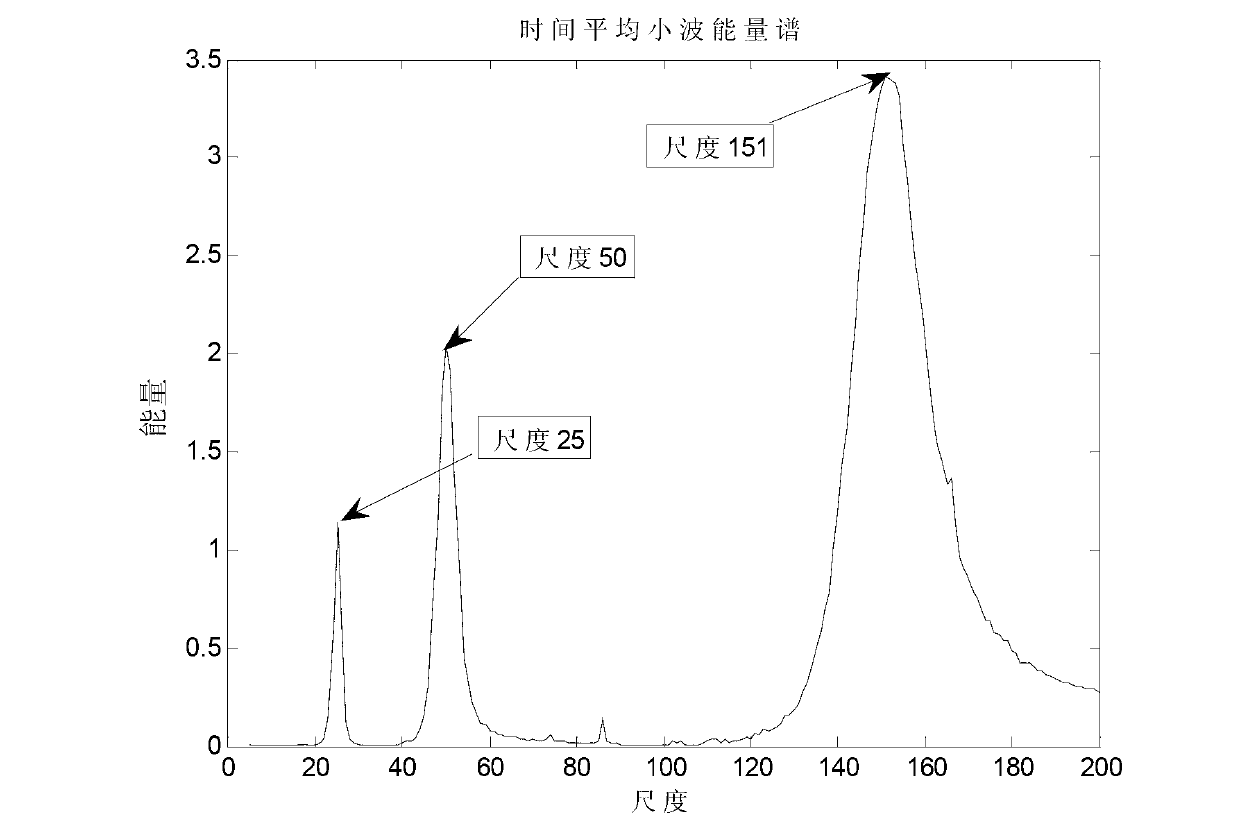Modal parameter identification method based on response signal time-frequency joint distribution characteristics
A technology of distribution characteristics and time-frequency combination, applied in measuring devices, instruments, measuring ultrasonic/sonic/infrasonic waves, etc., can solve the problems of noise sensitivity and only processing steady-state signals
- Summary
- Abstract
- Description
- Claims
- Application Information
AI Technical Summary
Problems solved by technology
Method used
Image
Examples
Embodiment 1
[0066] Embodiment 1: Simulation signal
[0067] Construct the impulse response signal of a single-degree-of-freedom structural system to simulate the response signal of the first three modes of the structure:
[0068] y(t)=ay 1 (t)+by 2 (t)+cy 3 (t)
[0069] where y i (t) represents the shock response signal corresponding to the i-th mode:
[0070] y i ( t ) = e - ζ i 2 π f i t sin 2 π f i t 1 - ζ i 2 , i = 1,2,3
[0071] Let the third order frequencies be f ...
Embodiment 2
[0076] Example 2: Experimental Signal
[0077] In order to verify the effectiveness of the method described in the present invention, the modal experiment of multi-rotor structure has been implemented, and its structure is schematically shown as Image 6 . Structure 2 is the measured rotor structure, Figure 7 is its three-dimensional solid model. The structural material is 45 steel, the elastic modulus is 210GPa, Poisson's ratio is 0.3, and the material density is 7800kg / m 3 . In the test, the hammer is used as the pulse excitation source to excite the vibration, and the piezoelectric acceleration sensor is used to pick up the response signal. The number of measuring points is 20, the sampling frequency is set to 3200Hz, and the sampling length is 1024.
[0078] Because the modal parameter range of the actual signal is unknown, the value range can be selected in advance when selecting the scale parameter, and then the scale parameter can be adjusted according to the corr...
PUM
| Property | Measurement | Unit |
|---|---|---|
| Elastic modulus | aaaaa | aaaaa |
| Density | aaaaa | aaaaa |
Abstract
Description
Claims
Application Information
 Login to View More
Login to View More - R&D
- Intellectual Property
- Life Sciences
- Materials
- Tech Scout
- Unparalleled Data Quality
- Higher Quality Content
- 60% Fewer Hallucinations
Browse by: Latest US Patents, China's latest patents, Technical Efficacy Thesaurus, Application Domain, Technology Topic, Popular Technical Reports.
© 2025 PatSnap. All rights reserved.Legal|Privacy policy|Modern Slavery Act Transparency Statement|Sitemap|About US| Contact US: help@patsnap.com



